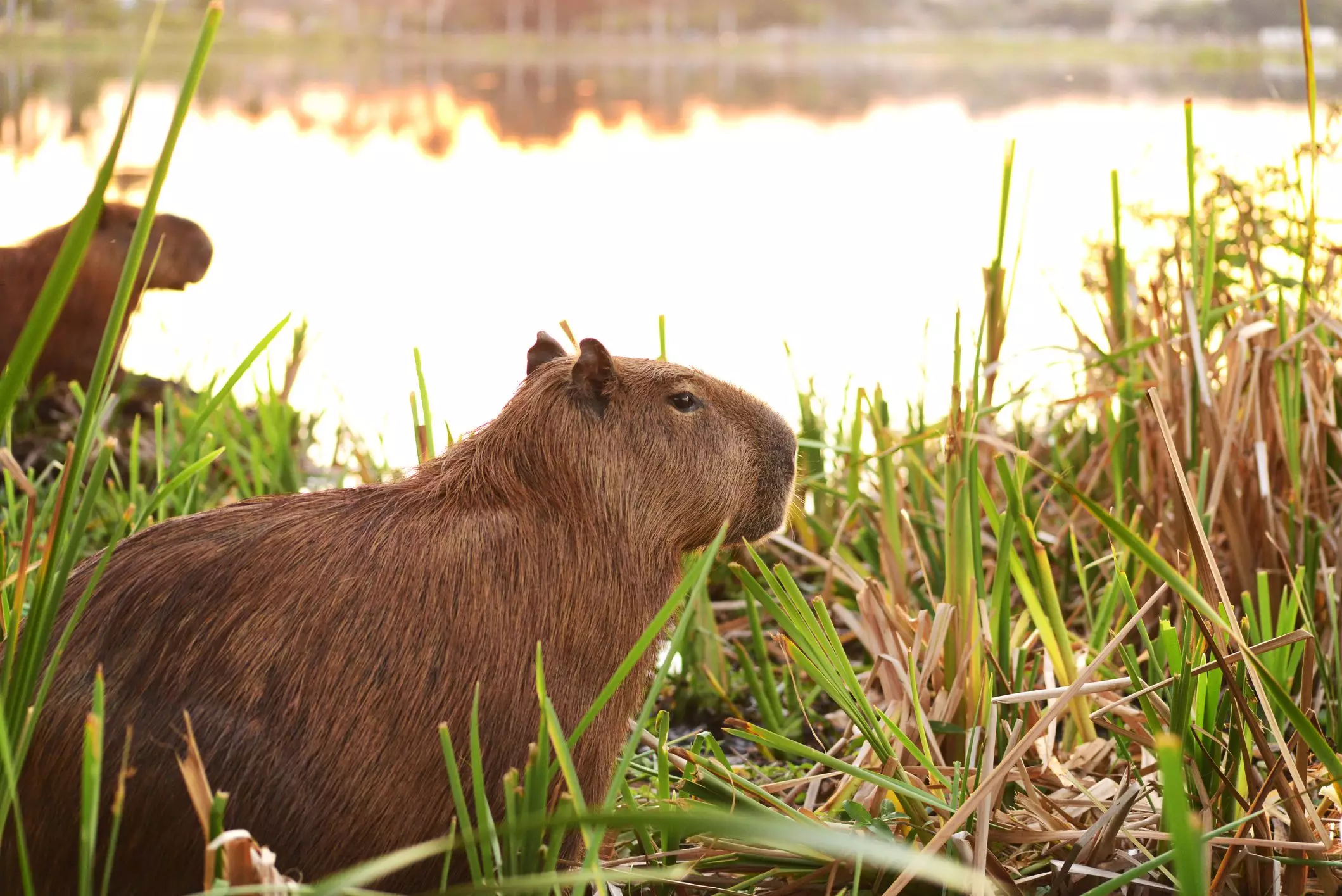Capybaras, often referred to as giant guinea pigs, are intriguing creatures that have captured the hearts of many. However, their charm comes with significant responsibilities that potential owners must consider seriously. This article delves into what it takes to keep capybaras as pets, discussing their needs, social structure, legal considerations, dietary requirements, habitat, and overall behavior.
Capybaras, scientifically known as *Hydrochoerus hydrochaeris*, hold the title of the largest rodents on Earth, capable of reaching weights of up to 170 pounds and lengths of 36 to 48 inches. While their social demeanor might resemble that of house pets, they require a much different approach to care. Unlike dogs or cats, capybaras are inherently wild animals that thrive in social groups. They exhibit understated intelligence and require companionship, making them unsuitable for solitary living. Adopting one capybara is not advisable as they can become stressed and depressed without a friend.
Before considering capybaras as pets, individuals must acknowledge their long lifespan, which averages between 8 to 12 years in captivity. This extended commitment necessitates careful planning and a clear understanding of the responsibilities involved in properly caring for these animals.
One of the first steps anyone contemplating capybara ownership must take is researching local laws and regulations. The legality of owning capybaras varies widely across the United States. Some states, like California and Georgia, consider them illegal pets, while others, including Texas, Pennsylvania, and North Carolina, allow ownership with ease. Cities may also impose their own restrictions; for instance, capybaras are banned in New York City’s five boroughs. This patchwork of legal frameworks means potential owners must be diligent in ensuring they comply with their local laws before proceeding.
Additionally, ethical considerations must play a pivotal role in the decision to bring capybaras into human homes. Capybaras’ natural habitat consists of marshy environments filled with standing water—conditions that may be challenging to replicate in a domestic setting. Thus, owning capybaras raises concerns about whether one can adequately recreate their home environment.
Providing a suitable living space for capybaras is crucial. Ideally, they should have an outdoor space preferably around 12 feet by 20 feet for a pair, including access to a sizable water body where they can swim and cool off. These rodents are semi-aquatic and need water for hydration and exercise. A shallow pool will suffice for wading, with ample shaded areas to ensure they do not overheat.
Moreover, it is essential to create a safe enclosure that protects them from predators while allowing for ample room to roam. The fencing should be at least four feet tall to prevent escape, and gaps must be tightly secured to keep them safe. Their habitat must include chewing materials such as untreated wood, dog toys, or safe plant life, as chewing helps maintain their dental health.
The diet of capybaras is another critical aspect of their care. These herbivores primarily thrive on grass and hay, particularly high-quality grass hay, which can be found readily in pet shops. Their teeth grow continuously, so a diet rich in fibrous materials is vital to prevent dental issues that could lead to serious health complications. Additionally, capybaras require Vitamin C in their diet since they are unable to synthesize it; thus, fortified pellets are often used as a supplement.
Monitoring their health through regular veterinary check-ups is also crucial in ensuring their well-being. Capybaras are prone to health problems such as respiratory infections and skin issues, necessitating a clean living environment to reduce such risks. Observing their waste can also provide insight into their health; loose droppings may indicate dietary imbalances or health issues.
Capybaras are extraordinarily social creatures. They communicate with each other using various vocalizations, such as purrs, barks, and whistles. Their social nature means they thrive best when kept in groups, where they can express themselves and engage in social grooming behaviors. Because they are shy and can take time to acclimate to human interaction, bonding may demand patience, underscoring the need for a gentle approach.
Training a capybara is possible, especially when started at a young age. House training can be achieved, although it may take time. Engaging with capybaras in a calm, friendly manner can foster trust and facilitate social interactions that promote a positive relationship with their human caregivers.
Owning a capybara demands significant commitment, extensive knowledge, and the ability to meet their complex needs. Their social nature, dietary restrictions, and habitat requirements make them unsuitable for many households. Although they make fascinating companions, individuals should assess whether they can provide an environment that truly meets the needs of these stunning creatures. For those who can successfully care for them, capybaras can offer unique companionship that enriches life in ways few other pets can. However, for most, these remarkable rodents may be best suited for preservation in their natural habitats or a zoo, where they can thrive in environments tailored to their needs.

